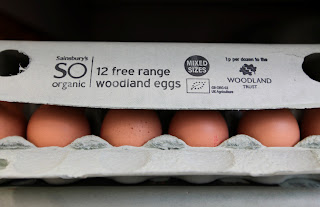The UK observes American trends but usually queries their relevance.
There is one trend though that could have massive implications for food
businesses over here and that is the drive to label all foods that contain
genetically modified ingredients.
To date, here and in the US, the emphasis has been on claiming that
foods do not contain GMO’s.
Now the debate has moved on and a head of steam is building up to say
that consumers need to know exactly what is in their food, not just what might
not be in it, and that means declaring if food has a GM content.
The implications are huge. USDA, (the American DEFRA) estimates that in 2013 some 90% of the corn crop and 93% of the soybean crop were planted with genetically modified seed. 90% of rapeseed is genetically modified. Corn based products go into a wide array of foods, including soft drinks, cereals, and breads. Rapeseed oil is widely used as are soy bean based products, most notably in animal feed. Consumers doing their grocery shop will find it difficult to avoid buying GM containing food. They may not like this and start demanding non GM versions.
The implications are huge.
Should this happen then every
player in the food chain will be affected. As Karen Batra of the Biotechnology
Industry Organization says “Farmers, food producers, grocers and retailers
would have to implement separate and distinct systems to grow, handle, record,
process, transport and sell products”. There will be many players in the food
chain who simply cannot make a change to non-GMO products for cost reasons.
Many will say that it won’t
happen here.
There is though an interesting straw in the
wind. Wholefoods Market, an American premium food retailer with 9 stores in the
UK, has committed to labelling all its GM containing foods by 2018, with many
labelled before then. Currently the move is confined to the US and Canada, but
if it proves a business builder then they may decide to adopt a similar stance
in the UK. From there it is but a short hop to the big retailers here implementing
a similar policy.
The debate about whether GM
products should be allowed in the UK ebbs and flows. It may become obsolete if
consumers are forced, through labelling, to confront the issue and decide that
GM foods are something they are not prepared to buy.



















